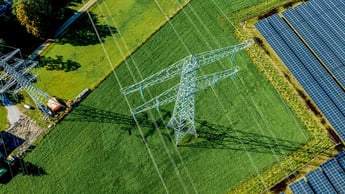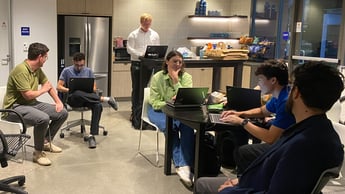Challenge
Energy systems in large centrally managed buildings (offices, hotels, etc.) are often inefficient and conventional. What we see in practice is that, at the completion of a building, installers configure the heat pump and installations once, making a summer and a winter schedule. After that, the system runs as configured and no more changes are implemented. So, imagine what happens on a very warm spring day - with the system still in winter mode.
Luckily, more modern systems are available. These systems provide insights to users (monitoring dashboard), allow administrators (e.g. facility managers) to adjust settings, and come with thermostats that can be set per room. Although more efficient than traditional systems, it still comes down to manual adjustments and doesn’t exclude human error.
With Entune, we take this a step further and make the energy systems of centrally managed buildings truly smart. Think of including weather predictions, energy prices, building characteristics, and heat pump dynamics.
Technology
To create such a smart energy system for buildings, we started by creating a digital twin (DT) of the building: a virtual replica of the building based on data, that enables real-time monitoring, analysis, and simulation for optimization and decision-making purposes. This DT can accurately predict energy characteristics of the building: we simulate how much the building heats up or cools down at a given moment in time based on weather forecasts, sun irradiation, thermal mass, and more, which tells us if we need to turn on the heat pump or the air conditioning to reach a comfortable temperature.
To automatically predict, we use a Model Predictive Control (MPC) model, where we combine machine learning and a physical approach. This combination is essential, as it allows the system to learn over time. Also, it doesn’t require a lot of training data, and can be easily adjusted to any type of building. The MPC arranges the temperature in the building by constantly running simulations (based on the building’s temperature data, building characteristics, and weather forecasts), and making decisions based on these simulations.
Another important aspect is the COP value of a heat pump, representing its efficiency. Sometimes, it’s more (energy-) efficient to cool or heat a bit further, instead of constantly turning the heat pump on and off. Optimizing the COP value is another aspect that the MPC controls.
Impact
At one of our pilot customers, health center BBDW, we’ve already achieved 10% savings on their total energy bill - within a period of three months. In addition to the savings, the BBDW facility manager was particularly happy with the insights in end-user behavior. These insights are giving him a clear overview of who turns on the thermostat to what temperature in which room and the differences between habitants (for example: the doctor turning the thermostat up to 23 degrees every morning, and the physiotherapist turning it down to 18 each day), which is direct tangible input for conversations.
What's important is that these savings and insights have not negatively affected the users' overall comfort. On the contrary, since the launch of Entune Building in the health center, there has been a 66% decrease in overall manual user thermostat interaction. This suggests that users are more comfortable with Entune’s settings and are experiencing less discomfort.
By further improving our system, we’re confident that we can achieve a 20% energy saving in the future. The system at BBDW doesn’t yet include dynamic energy prices and is based on temperature per room. In the future, we’d like to steer on the energy needs of the entire building instead of room specific.
For more information, visit the Entune website.






